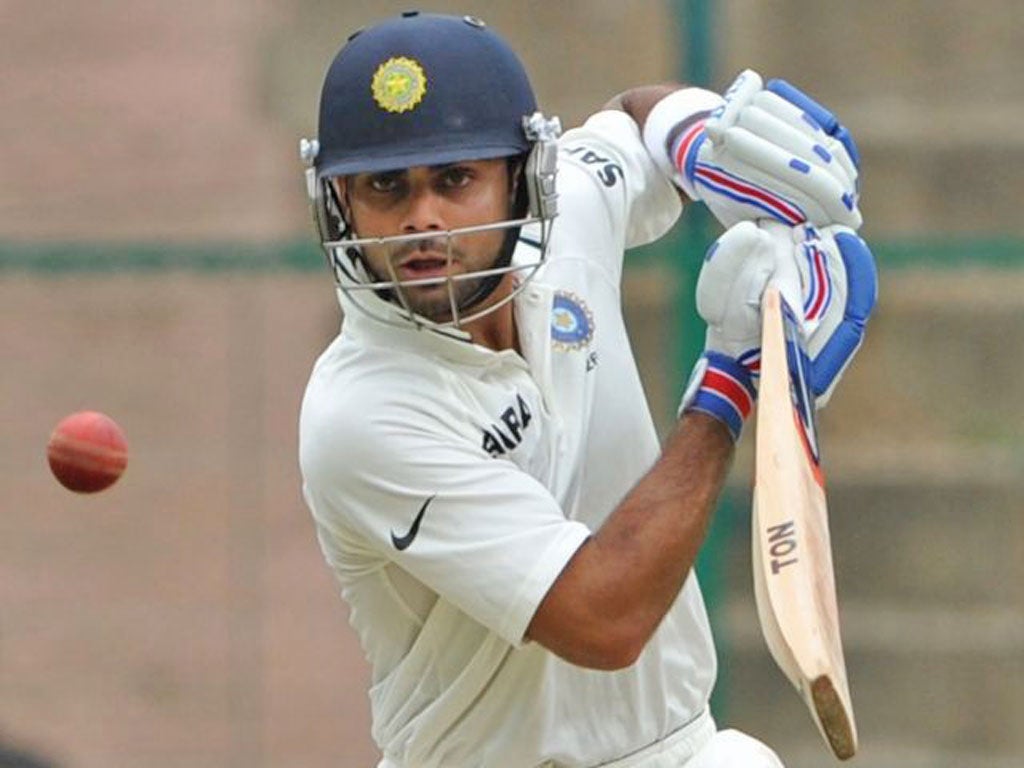India pay price for falling into pitch battle
The Indian Angle

Your support helps us to tell the story
From reproductive rights to climate change to Big Tech, The Independent is on the ground when the story is developing. Whether it's investigating the financials of Elon Musk's pro-Trump PAC or producing our latest documentary, 'The A Word', which shines a light on the American women fighting for reproductive rights, we know how important it is to parse out the facts from the messaging.
At such a critical moment in US history, we need reporters on the ground. Your donation allows us to keep sending journalists to speak to both sides of the story.
The Independent is trusted by Americans across the entire political spectrum. And unlike many other quality news outlets, we choose not to lock Americans out of our reporting and analysis with paywalls. We believe quality journalism should be available to everyone, paid for by those who can afford it.
Your support makes all the difference.How much of a role should home conditions play in a Test series? It has easily been the second most debated question during the course of the India versus England series after the discussion over Sachin Tendulkar's future. Everyone, including people not involved in the series – like Steve Waugh – got involved in the chatter. But at the end of it, with India down 2-1 and needing a win, we got a pitch in Nagpur that really should have had "DON'T WATCH TEST CRICKET" emblazoned across it in deep red paint.
It is a pitch that has seen a total of 817 runs scored and 22 wickets falling in 367.5 overs of action over four days – that is a cumulative scoring rate of 2.22, and a rate of 5.5 wickets per day. Kevin Pietersen called it the "toughest wicket" he has ever played on, while Virat Kohli, who has scored the only century of the match so far, looked deeply disturbed when he said the pitch "wasn't easy to bat on" – an understatement if there ever was one.
Now, producing a pitch that makes life difficult for batsmen is not a bad thing. Indeed, a spinning or a seaming and bouncing wicket is always an acceptable option for Test cricket. But what if the pitch in question – over four days – doesn't provide anything to the bowlers? This is India. Surely cracks should open up, the ball should turn, maybe even have some uneven bounce? That's irrespective of whether the Indians are in a strong position in the series or not.
Test matches often end in draws, but should a pitch be designed to ensure that a draw is the only probable result? Forget the result, what does it say about a pitch that doesn't make life easy, or difficult, for anyone?
Which brings us to the fans. After all the talk of Test cricket gasping for breath, especially in India, we had over 20,000 people on both Saturday and yesterday at Nagpur. Thankfully, it was a sporting crowd that didn't stop backing the Indians or participating in the action – like Jonathan Trott's boundary off a pea-roller or R Ashwin's warning to the same batsman for backing up too much. The stadium, on all days, also had a stand full of schoolchildren who had been allowed free entry – a plan that all associations should be encouraged to enforce. But what did those schoolkids go back with?
In India, youngsters are moving away from Test cricket – this can't be denied – and instant cricket, especially the Indian Premier League variety, is becoming more and more popular. Even outside of that, in urban India at least, European football and Formula One and even indoor options like Playstations are growing in popularity, possibly at the expense of cricket.
Doesn't a pitch like the one in Nagpur just facilitate that migration? As far as the schoolchildren who came in were concerned, wouldn't three hours of big hitting and, importantly, a result at the end of it, appear a far more engrossing prospect than a day in the sun where 190 for 4 was what they got?
India might have been foiled at their own game in the Mumbai and Kolkata Tests, where "rank turners" suited both the English batsmen and bowlers more than their Indian counterparts. But that couldn't have been reason enough for Pravin Hingnikar, the man in charge of the Nagpur pitch, to make what he did. It seems unlikely that it was done in consultation with Mahendra Singh Dhoni, the Indian captain who expressed his desire for turning tracks, or N Srinivasan, the chief of the Board of Control for Cricket in India, who made public his displeasure over the Kolkata pitch.
Maybe, from India's point of view, the idea was not to push for a 2-2 outcome but ensure it didn't end 3-1 in England's favour. Was it just a case of the pitch-makers messing up? If it was, then the mistake might just lead to a bigger cost than a few days of unexciting cricket.
Shamya Dasgupta is senior editor at Wisden India, wisdenindia.com
Join our commenting forum
Join thought-provoking conversations, follow other Independent readers and see their replies
Comments